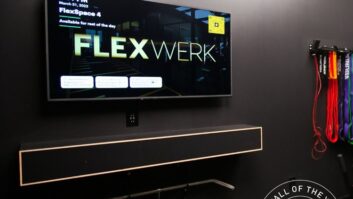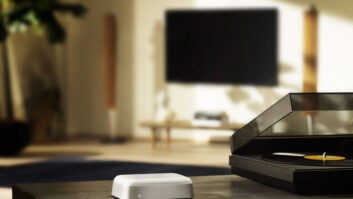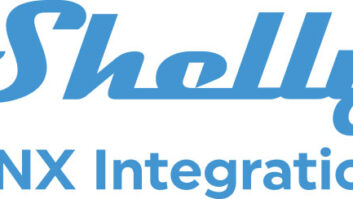A number of important bits and pieces of Federal regulation have taken effect recently. Not well publicized or made note of in the general or business press, they do have an important impact on the type of display and reception products that you will be selling through this fall season and well beyond that.
The impact of these rules is already beginning to take hold, as manufacturers begin to adjust the capabilities of the display products that will be part of their lines as we enter the fall selling season. Similarly, whether they like it or not, cable companies are also a part of all of this, both in the set-top products that they provide to customers and the CableCards they are now obligated to provide. It is worth taking the time to take a look at what these rules are and how they affect product selection and system connectivity. With that benchmark of descriptions taken care of this month, well return next month with the specifics of how the various brands are incorporating the required technology as well as their own proprietary features, designs and circuits into the actual products.
The first of these is the start of a series of connectivity regulations. These arose last year after the FCCs adoption of Plug and Play connectivity rules that were facilitated by the Consumer Electronics Association (CEA) and the National Cable & Telecommunications Association (NCTA). This initial line of demarcation means that cable companies offering HDTV services are now required to provide a set-top box with a recordable 1394 connection to consumers on request. This finally provides some use for the Firewire jacks that have been a part of some manufacturers lines for two product cycles.
In addition, cable companies are now also required to make a CableCard available to customers who request them. Previously, these were things that were talked about, but seldom available. After July 1 you may still encounter, Whats a CableCard, I never heard of that? when talking to the friendly customer service person at the local cable company. Some may even tell you that they arent ready yet.
Now that weve all turned the pages on our calendars, you have the option to nicely educate them as to the former, and tell them that We dont have them yet is no longer an acceptable answer. As the chances improve that you will be selling displays with CableCard slots in significant numbers, you need to know that you should be able to facilitate the installation of the cards for your clients. After chasing the formerly named POD cards, for more than a few years, they are finally a reality for both manufacturers and cable companiesand now for you, as well.
The implications of this are important. The requirement for 1394 connectivity on cable boxes means that any displays have already installed or sell from now on that include 1394 connectivity should, in theory, be able to talk directly to a cable box. This should not only do the obvious task of porting over the video and audio signals in a copy-protected, digitally compressed form, it should also provide interoperability for basic functionality such as on/off, volume control and channel selection through the 1394 link. Recordability is also in the spec, but given the current state of industry discussions over broadcast flags, copy control and content protection there is no sure guarantee that everything and anything will be available for recording, or that the recording will be in full HD resolution. The issue of recording HD and Digital Rights Management (DRM) is a weighty one and a subject for another day. However, at the very least you are now able to configure some sort of recording over the 1394 links.
In the past year or so, however, things appear to have been moving more towards the use of DVI as an interim digital connection from sources to displays, or sink devices as the engineers and policy wonks call them.
In the long term, HDMI is gaining momentum as the digital video/digital audio/control connection for the long term. Despite that, as somewhat of a late starter, HDMI (and DVI) are not mandatory for cable company supplied set top boxes until NEXT July 1. That does not, however, mean that there will be no HDMI-equipped sets in the marketplace this fall. As you will see shortly, it is quite the contrary.
The pony in all of this is the mandate that CableCards be made available on request. For those who are not familiar with CableCard, it basically provides a means for a video display that is equipped with a QAM digital tuner to receive not only the free, in the clear, channels on the system, but also any tiered or subscription channels a consumer is authorized to receive without the need for any other equipment.
This eliminates any connection hassles between an STB and the display, for it does away with the need for the STB. That, in turn, makes it much easier to unify all tuning functionality into one remote (although there is still the issue of dealing with dueling channel guides from the cable company and the choice of the set manufacturer). The elimination of the cable box makes it easy to deliver PIP with cable channels, and more than anything else, it finally makes DTV sets truly cable ready.
Indeed, that leads to the one feature that was given high visibility by many of the brands at their line shows, and it is an acronym that you will need to begin to educate your clients about: DCR. DCR stands for Digital Cable Ready and it is a common industry symbol that tells the sets owner that in addition to NTSC and ATSC tuners for analog and digital over-the-air reception, respectively, there is a QAM tuner, a CableCard slot and HDMI connectivity. With this entire suite of tuners, connectivity and compatibility, you are assured that the set will be able to deal with any broadcast or cablecast signal other than those with two-way interactivity (the subject of a future standard that is yet to be agreed to).
What does DCR mean beyond the physical and electrical requirements? It tells the consumer that the DCR display will work with all cable channels they are supposed to receive, regardless of resolution, format or encryption. It tells them that by building all of the necessary hardware into the display and by eliminating the outboard cable box there should, in theory, be no signal degradation caused by problems with cables or interconnections, and it certainly tells them that there is one less remote to worry about.
For you it means that installation should be easier, though you should remember to get the account information from your clients necessary to obtain the CableCard before completing the final installation and set-up. This allows you to put the card in its slot (often found on the rear of the set where it is hard to reach once the unit is installed in any millwork) and provide an extra bit of value-added service by taking care of the configuration required when a CableCard equipped display is used for the first time.
Indeed, since CableCard is something new, it is strongly recommended that you find the right person to talk to at the local cable companies to make sure you can obtain the cards for your clients. Then, devote some time during your regular staff training sessions to make certain that everyone is familiar with the specific menu screen options on all CableCard sets you work with so that no one forgets to not only physically place the card in its slot, but also to enter the account data needed to activate the set for the specific services the client has subscribed to. It sounds simple, and it actually is. However, as with anything new, it is always better to have a trial run in the shop before you leave for the job site, rather than find out later on that there is a problem no one anticipated.
In evaluating display lines you will likely see some DCR equipped RPTVs in most of the major lines (Thomson, Sony, Mitsubishi, Toshiba, Hitachi, and others), while some brands (Pioneer, among others) are adding the DCR suite to plasma models. Dont expect to see DCR on front projectors, as they rarely, if ever, include a tuner of any type, and so far no one has announced a fully DCR compliant direct view set.
Where this gets complicated is that you will also see some, but not all of the various features required for full DCR compliance in almost every brands line as the manufacturers comply with another of the FCCs regulations that kicked in on July 1. The rule, part of the schedule for digital tuner integration, states that starting on July 1, at least half of a brands displays must include an ATSC (over-the-air HDTV) tuner if they include a tuner for standard analog channels. Heres here you have to look closely to avoid selling a set to someone thinking it will do one thing, and finding out the hard way that it will not.
The thing to remember is that there are three types of tuners, excluding those required for satellite, which is a different subject altogether. NTSC tuners are used to receive the standard analog over-the-air and analog cable channels weve all been watching for the last fifty years. ATSC tuning allows a set to tune to those same frequencies, but when it sees a DTV or HDTV signal, it is able to receive, demodulate and decode it. This gets you the local, over-the-air HD signals, but not anything from a cable hook-up. The key there is to look for sets that have QAM tuners built-in. That lets the set deal with digital cable signals. Remember that a QAM tuner alone, without a CableCard, will only allow reception of in the clear digital cable channels, and there arent many of those. To receive the pay channels or tiered premium channels you will need to still resort to the use of an external cable STB unless the set has a CableCard slot.
Confusion will arise when you do not properly gauge the clients needs and provide the right type of set. For example, Samsung is unique in introducing direct-view CRT sets in 26-inch, 30-inch, 32-inch, 26-inch-wide and 30-inch-wide sizes that include NTSC and ATSC tuning, beating the FCC requirement for those sizes by a year. That enables them to pull in off-air HD, but they will still need to use their analog component or DVI connections to display signals from a cable systemthe ATSC tuner just doesnt help with that anymore. Similarly, virtually all other direct view sets, be they CRT or LCD, particularly in under 32-inch screen sizes, will also need analog component, DVI or HDMI inputs to receive HD, as they dont need to have ATSC tuning until July 1, 2005, and they probably wont!
Thus, dont let the inclusion of one type of tuner lull you into complacency with the thought that it might work in all situations. It wont. Look for DCR at best to eliminate cable boxes, 1394 as a backstop for cable-box connections, DVI or HDMI for future connectivity and remember that at the end of the day it may still boil down to good, old fashioned, Y/Pr/Pb analog component inputs for cable reception if the specific model that is otherwise best suited to the clients needs doesnt have a QAM tuner and CableCard slot.
Confused yet? It gets better. None of these rules apply to satellite services, so the receivers they supply may be designed with the connectivity of the designers choice.
Fortunately, that is going to include at least a DVI connector, and increasingly, an HDMI connector, as well, on most of the current offerings for both DirecTV and EchoStar. Wait, it gets better. While part of the object of including CableCards is to make it possible to do away with the need for a separate set-top box, that doesnt help you very much in most cases if you want to offer PVR capability for HDTV delivered over cable. At this point in time neither TiVo, RePlay, or any of the other brands who offer PVRs have announced a product that includes both a QAM tuner for cable reception and the all-important CableCard slot. That means that if you want to provide PVR capability for off-air or cable broadcasts, your options are limited to one of the very few brands that offers CableCard and a hard drive that is built in to either the display itself, an optional set-top tuner box or connected to the QAM/CableCard equipped display via a 1394 link. As youll see in the continuation of this report in next months RS brands such as Mitsubishi offer exactly that feature set, but it is still very much the exception, rather than the rule.
Thus, you can provide off-air HDTV time shift via products from LG, but that wont help you with cable and premium networks. You can time shift off-air and satellite delivered services with products delivered with TiVo based PVRs for DirecTV and similar products made available by EchoStar for Dish Network subscribers. However, this may leave a hole in the channel line-up if your client wants to time-shift a pay channel that is not in the lineup of their preferred satellite provider or an off-air station that is available on cable but not close enough or strong enough to be picked up by an off-air antenna. (Remember, outside of the top 30 markets, stations are still not obligated to run their DTV transmitters at full power, and along with topographic conditions, this may limit off-air DTV/HDTV reception.)
Of course, the cable companies have figured all of this out, and they see PVR as a growing opportunity. As the year moves on, more and more of them will offer set-tops with PVR capability. That will have an impact on your hardware sales and it also means that the whole notion of CableCard doesnt mean anything to a consumer who cant take advantage of it to facilitate time-shift PVR and favorite features such as broadcast pause.
OK, so no one said it was going to be easy. Sooner or later more products will be available to help sort all of this out: CableCards and DCR will spread downward through the manufacturers lines into a wider range of sets and to sets with smaller screen sizes. The limitations of you, rather than the cable company providing HD PVR will be worked out one way or another. The additional limitations that restrict the current cable connectivity agreement to one-way services will also be lifted once a full, two-way, interactive Plug and Play agreement is hammered out, but dont promise it to consumers just yet; its at least one product cycle off in the distance. Perhaps more.
Dont take all of this as doom and gloom, for the sets that will be available have greatly improved features, and DCR, CableCard, built-in tuners and increased connectivity are only some of them. There are more choices in microdisplay-based RPTV products, there is a dramatic increase in the number of LCD sizes and models, and there are even some interesting things in the world of set-tops that you CAN sell to customers, rather than simply connect after the cable guy drops something off at the job site.
In next months issue youll see exactly what that means as our review of new display, reception and playback source components continues.
Michael Heiss ([email protected]) is a technology and marketing consultant based in Los Angeles.






